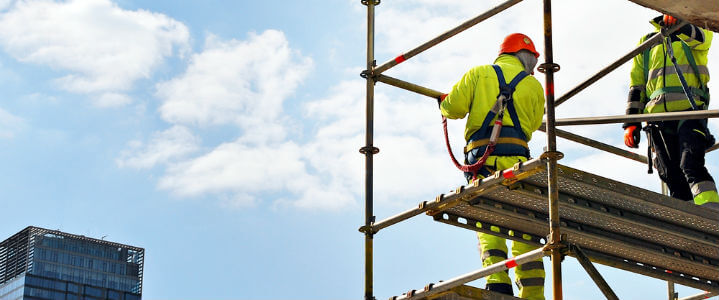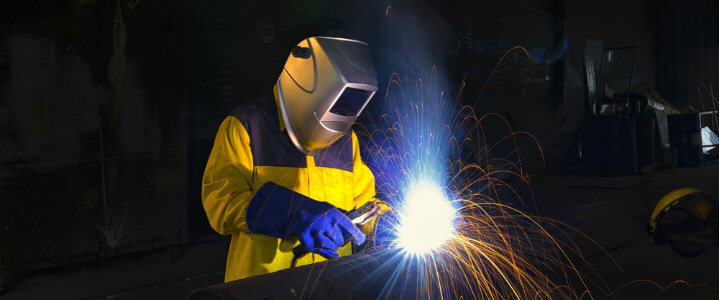Employees in office settings rarely worry about their safety at work, but it’s not the same across all industries. Workplace hazards can result in severe injuries and even death. As a result, CEOs and managers in these industries want to schedule annual health and safety reviews to avoid accidents and costly penalties. Here are eight industries that benefit from professional safety consultations.
The Importance of Workplace Safety Consultants
Safety consultants check for hazards and ensure safety compliance with local state and federal regulations. Their inspections focus primarily on workplace machinery and employee personal protection equipment (PPE). Building managers are given a list of areas that need improving before the next visit.
How often the consultant visits your workplace depends on the contract. Safety consultations also help you create employee safety training programs and manuals.
Top 8 High-Risk Industries with Health & Safety Concerns
Not all industries need safety consultants, but some do. Here’s a look at safety by industry so you know if you should schedule a consultation.
1. Construction
When you think of hazardous workplaces, the construction industry often comes to mind. Employees are working with and around heavy equipment, sometimes at great heights. Construction workers also find themselves using hazardous materials, increasing their risks of injury.

Hard hats and other protective gear are standard on construction sites, but accidents can still occur. Check out these helpful construction site safety procedures.
2. Manufacturing
Manufacturing plants come with more hazards than you may realize. Accidents can happen around the machinery, especially if the guarding is improperly installed. Your employees should be well-versed in manufacturing safety requirements, so they know what to do in the event of an electrical fire or equipment malfunction.
Respiratory gear for employees should be standard when working around chemicals, smoke, or other contaminants. Learn more about
3. Mining
The mining industry is seeing improvements in employee safety, but it is still a very hazardous environment. Poor air quality, bad lighting, and the potential for a cave-in or flooding are constant worries for miners.
Unfortunately, some mining companies ignore the potential dangers their employees face on the job.
4. Healthcare
Compared to other industries, the healthcare sector often seems to be a relatively safe work environment. Other than the stress associated with working long hours, many people mistakenly believe the sterile environment is enough to protect employees.
Airborne pathogens can infect employees, and there is always the risk for accidental needle jabs. Regular employee medical screenings are a way managers can protect their staff’s health.
5. Transportation
Risks in the transportation industry are more likely to occur on the road. Traffic accidents happen more frequently than you may realize. Whether the wreck is caused by driver negligence or bad roads, it is often costly for the company.
Driver safety training is one way companies can decrease the potential for workplace accidents.
6. Warehousing & Storage
Warehouse safety management starts with providing a hazard-free work environment. For example, keep aisles free from clutter and debris and the floors dry. Ensuring employees are familiar with operating the machinery is another vital safety step.
7. Oil & Gas
According to OSHA, the oil and gas industry has one of the highest percentages of work-related accidents.
Some of the safety issues include vehicle and machinery accidents. Blowouts from wells are other dangers, along with falling from great heights. Rig collapses and fires are other workplace hazards.
8. Welding
Even though welders go through a certification process, workplace accidents can still happen. For example, sparks from the welding equipment can singe employees or start fires.

Depending on what is being welded, toxic fumes can be a hazard for employees. Along with training on proper equipment use, employees should also be familiar with welding fume safety and regulations.
SBD Develops Workplace Safety Strategies for High-Risk Industries
Owners and managers in these eight high-risk industries need to take advantage of safety consultations and training programs. These strategies do more than protect your employees. They can also help with your bottom line.
Workplace injuries are expensive for companies, especially if non-compliance fines are levied against the business. The most effective method of ensuring workplace safety is working with a third-party safety consulting firm. They will inspect your workplace and point out areas that need improving.
With help from the consultants at Safety By Design, you can develop a safety program that meets the needs of your industry. Contact our team today to schedule a safety consultation.
Tags: high risk industries, safety consultations, safety consulting company, workplace safety


